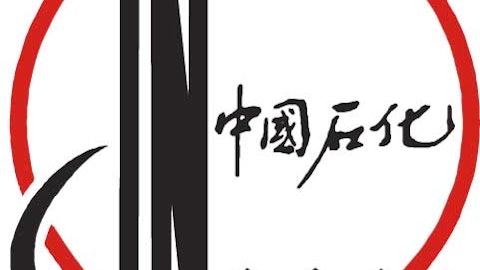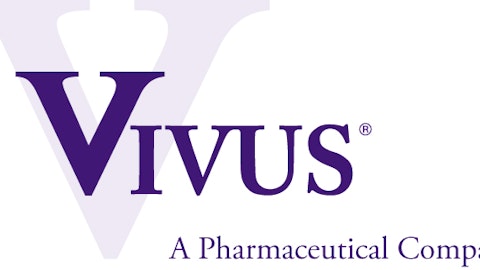Keryx Biopharmaceuticals (NASDAQ:KERX) announced its second-quarter results before the market opened on Thursday. Shares fell slightly as investors reacted to the biotech’s worse-than-expected loss of $0.14 per share. Analysts had estimated Keryx’s loss at $0.10 per share. The more important news for Keryx Biopharmaceuticals (NASDAQ:KERX) isn’t earnings, though. Here’s what you really need to know.

The best news from Keryx Biopharmaceuticals (NASDAQ:KERX)’s update is that the New Drug Application, or NDA, for Zerenex in treating hyperphosphatemia in patients with end-stage renal disease is on track. CEO Ron Bentsur said that the company plans to submit the NDA within the next two weeks.
Investors have been eagerly awaiting the filing of this NDA ever since Keryx Biopharmaceuticals (NASDAQ:KERX) announced great results from its phase 3 study of Zerenex. In that study, the drug reduced patients’ mean serum phosphorus levels significantly compared to placebo.
Adding icing to the cake, patients taking Zerenex didn’t have as much need for intravenous iron and erythropoiesis-stimulating agents compared to other patients taking Sanofi SA (NYSE:SNY)‘s Renvela and Shire‘s Fosrenol. Zerenex’s safety profile also seemed to stack up favorably against Renvela and Fosrenol.
If Zerenex gains regulatory approval (which I suspect it will), the drug could hit peak annual sales of $300 million or more for the hyperphosphatemia indication. One wild card, though, could be the impact of Renvela and Renegal going generic next year. Sanofi SA (NYSE:SNY) reached an agreement with Impax Laboratories Inc (NASDAQ:IPXL) in September 2012 that allows Impax to market generic versions of both drugs.
2. Cash isn’t a problem.
Keryx Biopharmaceuticals (NASDAQ:KERX)’s earnings miss isn’t a big deal in my view. The main culprit was increased expenses related to gearing up for submitting the Zerenex NDA.
How much cash the company has is key, though. On that front, things look pretty good for now. Keryx Biopharmaceuticals (NASDAQ:KERX) reported total cash, cash equivalents, interest receivable, and short-term investments of $80.4 million. That’s a big jump from the end of 2012 thanks to a secondary offering issued in the first quarter.
CFO James Oliviero said that the company’s cash position should take it through an expected mid-2014 U.S. commercial launch of Zerenex. That’s good news for now, although Keryx will need to generate more cash not too far down the road.
3. Mid-stage study results are on the way.
An even larger carrot dangling before Keryx’s eyes is the possibility of marketing Zerenex for pre-dialysis patients with chronic kidney disease, or CKD. The company expects a top-line data readout from its phase 2 study for CKD at the American Society of Nephrology conference scheduled in November.
Zerenex seems promising due to its ability to mitigate iron deficiency anemia associated with CKD while controlling phosphate levels. Bentsur is excited because he believes that “Zerenex is the only phosphate binder that has the potential to actually obtain a label” in the U.S. for the indication.
If Keryx is successful with securing the CKD indication for Zerenex, it would drastically bump up the revenue potential for the drug. Analysts think peak sales for Zerenex with this indication could be more than $500 million. Stifel Nicolaus analyst Stephen Willey projects the figures could be between $550 and $600 million.
Still a buy?
Keryx’s shares have soared more than 220% so far this year. Is the high-flying biotech stock still a buy? I think so.
Assuming Zerenex receives U.S. approval in 2014 and estimates of peak sales of around $300 million are roughly on target, the market cap for Keryx should realistically be well above $1 billion. If a second indication for CKD is eventually obtained, Keryx should be worth a lot more than that. Currently, the company’s market cap stands near $730 million.
I wouldn’t be surprised to see bigger players make a bid for Keryx at some point. Amgen, Inc. (NASDAQ:AMGN) is one possible candidate that would make a good fit. The big biotech already commands a significant presence in the renal disease market with products including Epogen and Sensipar. With more than $21 billion in cash socked away, Keryx would be an easy pickup for Amgen, Inc. (NASDAQ:AMGN).
AstraZeneca plc (ADR) (NYSE:AZN) is another distinct possibility. The British drugmaker has been actively licensing drugs related to kidney disease from smaller companies and had $8 billion in its coffers at the end of March. Most recently, AstraZeneca plc (ADR) (NYSE:AZN) paid $350 million upfront with possible milestone payments of $465 million to Fibrogen for its experimental drug FG-4592, which targets treatment of anemia in patients with CKD and end-stage renal disease.
Even if Keryx doesn’t become an acquisition target, I think its future looks bright. Biotech investors should still take a hard look at adding this stock to their portfolios.
The article 3 Things You Need to Know From Keryx’s Q2 Earnings originally appeared on Fool.com and is written by Keith Speights.
Fool contributor Keith Speights has no position in any stocks mentioned. The Motley Fool has no position in any of the stocks mentioned.
Copyright © 1995 – 2013 The Motley Fool, LLC. All rights reserved. The Motley Fool has a disclosure policy.




